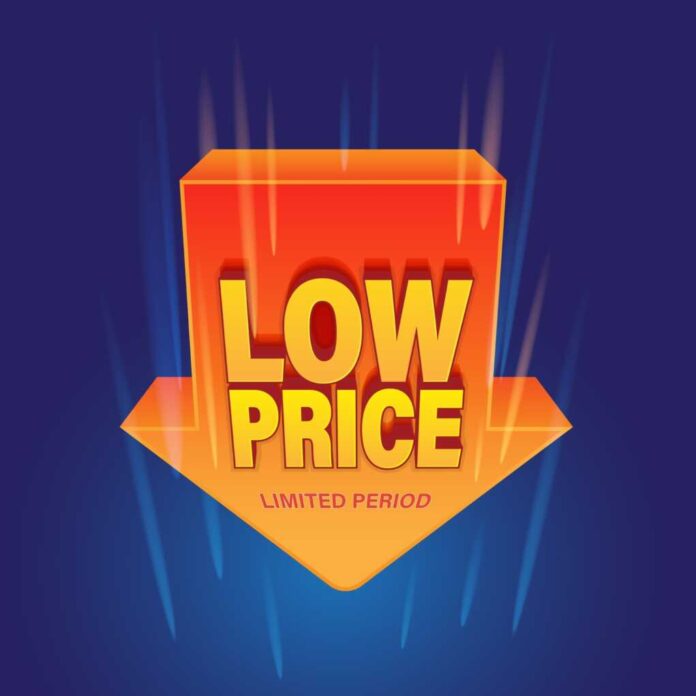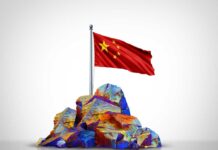
Walmart’s CEO just delivered a message to American shoppers that exposes how Trump’s tariffs are inadvertently handing this retail giant the perfect opportunity to crush its competition.
At a Glance
- Walmart plans to “play offense” with pricing strategies amid Trump’s tariffs, potentially increasing market share
- CEO Doug McMillon stunned Wall Street by suggesting tariffs might actually benefit Walmart’s competitive position
- Two-thirds of Walmart’s products are made in the US, providing some natural insulation from import tariffs
- Walmart+ membership program is becoming a secret weapon, with members spending three times more than non-subscribers
- The retail giant has historically gained market share during economic downturns, positioning it well despite trade uncertainties
America’s Retail Giant Sees Opportunity Where Others See Disaster
While most retailers are panicking about President Trump’s hefty new tariffs, Walmart’s executives are sharpening their knives and preparing to feast on their competitors’ misfortune. In a move that left Wall Street analysts slack-jawed, Walmart CEO Doug McMillon declared the company is actually in a position to “play offense” as tariffs reshape the retail landscape. This isn’t some corporate spin job—it’s a calculated strategy from America’s largest retailer to capitalize on economic uncertainty while smaller competitors crumble under the weight of 104% duties on Chinese imports and 46% levies on Vietnamese goods.
Let’s be clear about what’s happening here: as Biden’s inflation continues hammering American families, Walmart sees an opportunity to reinforce its position as the low-price leader. The retail behemoth has warned that some prices might increase—because math is still math, even at Walmart—but they’re betting their enormous scale and supplier relationships will allow them to weather this storm better than literally everyone else selling consumer goods. It’s exactly what happened during COVID and the 2008 financial crisis when Walmart expanded market share while others faltered.
Made in America: Walmart’s Trump Card
While the mainstream media has been breathlessly predicting retail apocalypse from tariffs, they’ve conveniently overlooked a crucial detail that Walmart CFO John David Rainey highlighted: approximately two-thirds of Walmart’s products are made right here in the USA. That’s a huge competitive advantage when your rivals are scrambling to rework their entire supply chains that depend heavily on Chinese manufacturing. No wonder Walmart sees opportunity where others see calamity—they’ve already got a significant portion of their inventory protected from the most severe tariff impacts.
Of course, electronics, clothes, and toys—items predominantly imported—will likely see price increases. But here’s where Walmart’s strategy gets interesting: rather than trying to protect profit margins at all costs, they appear ready to absorb some of the tariff impact to maintain their price advantage. It’s almost as if they’re thinking, “Sure, our margins might take a temporary hit, but if we can drive competitors out of business in the process, we’ll own an even bigger slice of the retail pie when the dust settles.” That’s not just business—that’s ruthless, calculated domination.
Walmart+ Becomes the Retailer’s Secret Weapon
While everyone’s distracted by tariff talk, Walmart has been quietly building a membership empire that’s becoming its ace in the hole. The Walmart+ subscription program now boasts an estimated 25 million members—more than double the number from fall 2022—and these aren’t just casual shoppers. These members account for nearly half of all spending on Walmart’s website and app, shopping twice as frequently and spending nearly three times as much as non-subscribers. During economic uncertainty, this loyal customer base becomes an invaluable asset.
“With the consumer driving 70 percent of the U.S. economy, Walmart’s weak guidance gave rise to some nervousness [about] potential consumer spending going forward.” – Robert Pavlik
In another shrewd move, Walmart has introduced Walmart+ Assist, offering discounted memberships to customers qualifying for government assistance. This isn’t just corporate charity—it’s strategic customer acquisition targeted at price-sensitive shoppers who are most likely to abandon other retailers when prices rise. The company has experienced eleven consecutive quarters of double-digit online sales growth, and membership programs are clearly fueling that momentum. As inflation-weary Americans look to stretch every dollar, Walmart’s position as the value leader becomes even more attractive.
Playing the Long Game While Others Scramble
The stark contrast between Walmart’s approach and the rest of the retail sector couldn’t be more telling. While competitors are desperately trying to minimize tariff damage, Walmart is actively strategizing how to expand its empire. The company’s executives stunned financial analysts by refusing to provide profit guidance, citing tariff uncertainties—a rare move that initially spooked Wall Street but actually demonstrates their long-term thinking. They’re not worried about next quarter; they’re plotting market domination for the next decade.
This isn’t the first time Walmart has navigated economic turbulence with aggressive tactics. Their playbook consistently involves leveraging their unmatched scale to squeeze suppliers, absorb temporary pain, and emerge stronger as weaker competitors fold. So while the Biden administration wrings its hands about Trump’s tariffs “hurting the little guy,” Walmart is proving once again that economic disruption often benefits those positioned to capitalize on it. Love them or hate them, you have to admire their business acumen and foresight in turning potential disaster into strategic opportunity.

























